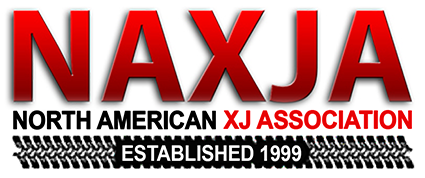What Rd
NAXJA Forum User
- Location
- Athens, IL
I lost a weekend of wheeling to this head-scratcher, so I'd really appreciate some help in getting this sorted out and corrected.
On my 93 XJ, 4.0, AW4, non-ABS with a swapped-in D44 with a TSM disc conversion, I replaced the single diaphragm booster with a yard-sourced double-diaphragm booster from a 96 XJ. I also installed a new master for a 96 XJ. Before this upgrade, I was getting braking that was pretty weak - just barely livable. Immediately after the install, I had to push almost all the way to the floor to get any resistance on the pedal. Adjusting out the rod inside the booster that pushes into the master cylinder seemed to correct that problem. The braking at this point was much improved, although still biased too much to the front. I had planned to open the proportioning valve and remove the o-ring as has been described here many times - but after my wheeling weekend.
On the morning of the first day of event runs, and before even getting past the edge of town, my brakes started to drag. Every time I used the brakes, the harder they were sticking in the applied position. This continued until I could only move by driving the engine hard against the nearly locked up brakes.
After relieving some of the pressure on the front lines by opening the bleeders, they returned to normal on/off function - or so it seemed. After a few applications, the continual increase in pressure on the front brakes became obvious. This repeated three times. A review of possibilities involved rebleeding the master, rebleeding all the lines, opening and cleaning the proportioning valve, and checking that the master was pulling on the fluid on the upstroke. Still, with one caliper off and a clamp applied, the pressure from that caliper went across into the opposite front caliper - rather than back up into the master.
Believing this to be a problem with the proportioning valve, I removed the o-ring for the rear circuit. That had no beneficial effect. Then I swapped out the proportioning valve for one from a 2004 TJ Unlimited. Still no beneficial effect.
I'm at a bit of a loss to figure out what's wrong. Suggestions? Anyone encountered this behavior before?
Thanx in advance.
On my 93 XJ, 4.0, AW4, non-ABS with a swapped-in D44 with a TSM disc conversion, I replaced the single diaphragm booster with a yard-sourced double-diaphragm booster from a 96 XJ. I also installed a new master for a 96 XJ. Before this upgrade, I was getting braking that was pretty weak - just barely livable. Immediately after the install, I had to push almost all the way to the floor to get any resistance on the pedal. Adjusting out the rod inside the booster that pushes into the master cylinder seemed to correct that problem. The braking at this point was much improved, although still biased too much to the front. I had planned to open the proportioning valve and remove the o-ring as has been described here many times - but after my wheeling weekend.
On the morning of the first day of event runs, and before even getting past the edge of town, my brakes started to drag. Every time I used the brakes, the harder they were sticking in the applied position. This continued until I could only move by driving the engine hard against the nearly locked up brakes.
After relieving some of the pressure on the front lines by opening the bleeders, they returned to normal on/off function - or so it seemed. After a few applications, the continual increase in pressure on the front brakes became obvious. This repeated three times. A review of possibilities involved rebleeding the master, rebleeding all the lines, opening and cleaning the proportioning valve, and checking that the master was pulling on the fluid on the upstroke. Still, with one caliper off and a clamp applied, the pressure from that caliper went across into the opposite front caliper - rather than back up into the master.
Believing this to be a problem with the proportioning valve, I removed the o-ring for the rear circuit. That had no beneficial effect. Then I swapped out the proportioning valve for one from a 2004 TJ Unlimited. Still no beneficial effect.
I'm at a bit of a loss to figure out what's wrong. Suggestions? Anyone encountered this behavior before?
Thanx in advance.
